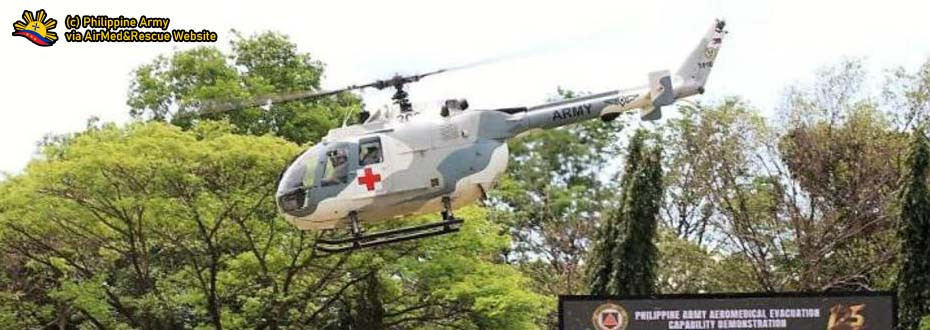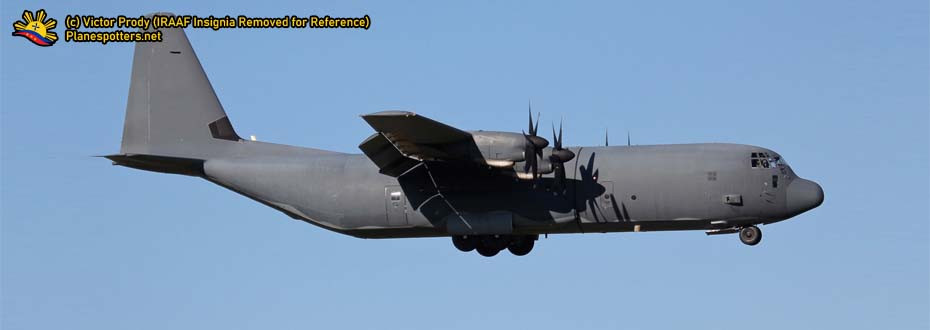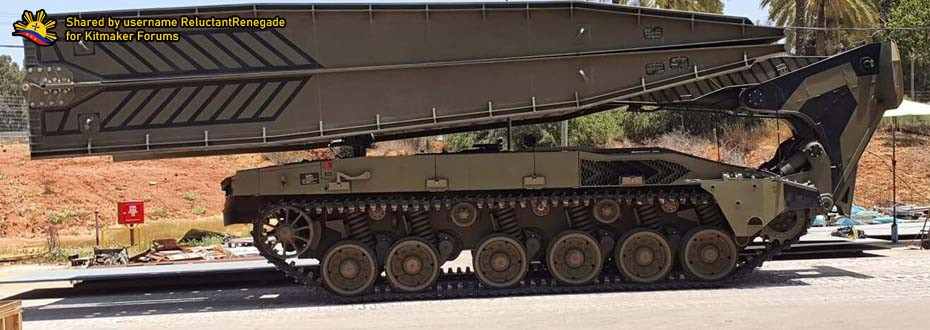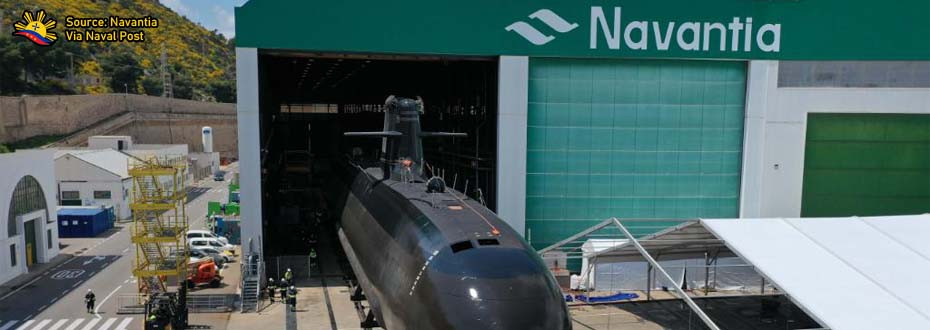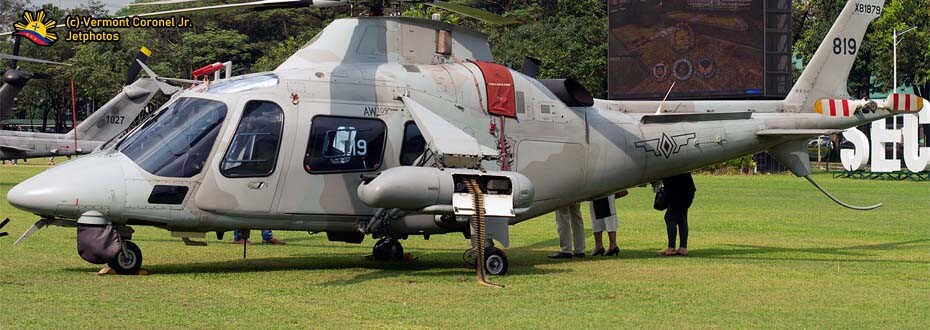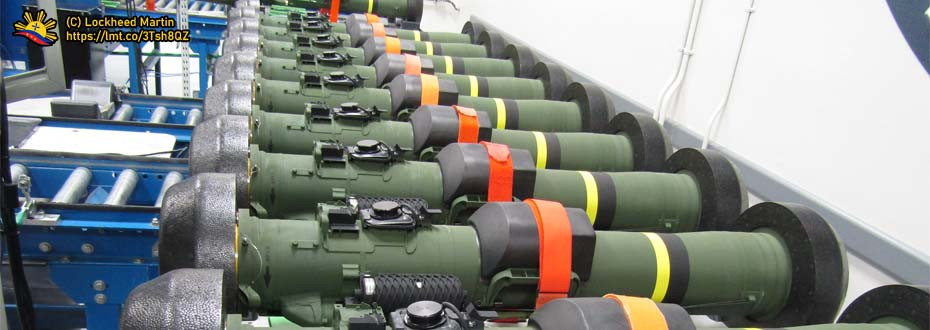Made by partnerships, this platform really much helped Brazil improve its armored vehicle capabilities in the sense that it may find its way to the inventory of the Armed Forces of the Philippines through a marketing pitch made by an Israeli company that contributed to the enhancements made on this armored vehicle.
This product goes along with the awarding of another project in the Philippine Army which also involves sophisticated armored vehicles.
OVERVIEW
A set of VBTP-MR Guarani Armored Personnel Carriers
Armored Vehicles are essential for an Armed Forces to have especially on the mobilization of troops and firepower across the land to the areas of concern especially with the safeguards that the troops needed for deployment are safe from ambushes, especially from small-arms fire.
Current armored platforms in service range from troop-carrying armored personnel carriers to APC, to an armed one such as an infantry fighting vehicle or IFV which is usually an APC with a gun turret fitted above designed for support against enemy infantry and armor depending on its configuration, and eventually a dedicated light or medium tanks which carries more firepower than a typical infantry fighting vehicle that can eliminate enemy infantry and armor at an increased lethality.
The Philippine Army currently obtains a significant number of armored personnel carriers such as the M-113 APCs and wheeled ones like the GKN Simbas made by GKN Systems (now part of BAE Land Systems) and V-150 Cadillac Gage Commandos that are still in service within the service branch's Armor "Pambato" Division which is soon to have newer assets within its inventory such as the one which will be discussed throughout the length of this article.
These newer assets aim to have the number of units within the armored division increase as it may augment the older, existing platforms in active service as more troops needed protection and support on their deployment and effectively improve the counter-insurgency drive of the Armed Forces against the enemy elements that endanger the peace and security of the country such as the Moro radicals in the south of the country or the Communist Reds scattered all across the nation's remote areas.
In this discussion, we will cover more in detail about the vehicle that the Israeli Defense Company Elbit Land Systems and C4I promoted to the Philippine Army through the Department of National Defense especially with the partnerships forged, the role that its main manufacturer Iveco played in the development, the company's profile and information existed from other defense pages which will be added for the context of this discussion matter.
THE BACKGROUND A CONTEXT ABOUT THE PROCUREMENT RESULTS
 |
The Philippine Army Guarani offer from Elbit also came with the option of
carrying a Remote-Controlled Weapons System.
Image Source. |
The Elbit's offer of the Iveco Guarani Armored Personnel Carrier is just one of the candidates for the Philippine Army's Armored Personnel Carrier (APC) Acquisition Project wherein it faced competition against the offers made by other manufacturers such as PT Pindad's Panser Anoa 6x6 APC, Otokar's Arma APC, Excalibur Army's Pandur II, as well as others not mentioned here.
These reports came out from a page extension made by a fellow defense outlet MaxDefense Philippines wherein they also provided details about the acquisition which came with 28 units, at the Allocated Budget for the Contract (ABC) price of Php 2,265,200,000.00 (or basically Php 80,900,000.00 per APC unit) of which it will have a weapons mount which can be seen on a link highlighted in red above.
The said deal is said to be done through a government-to-government deal in which the Israeli government played a role in making this procurement possible in the same manner that was done for the Light Tank Acquisition Project which was also won by Elbit with its Sabrah Light Tank offer (which is basically a modified ASCOD and Pandur platforms fitted with the Sabrah turret) wherein it may get discussed on a separate entry.
It is said in those reports that these Armored Personnel Carriers may have an option to be fitted with Remote-Controlled Weapons System that may come in place to the original manned turret offer (which are either a 12.7mm machine gun or a 40mm grenade launcher), weaponry that has already been proven onboard M-113s which was also supplied by the same Israeli weapons provider to the Philippine Army.
While the discussions of the procurement have already been covered by our fellow defense outlet and its extension page, we will not dwell much on its detail and instead, we will cover more about the platform itself and the manufacturer set up to have a greater picture of the details covering the future Armored Personnel Carrier that the Philippine Army is set to have.
DEVELOPMENT RESULTED FROM FORGING PARTNERSHIPS
 |
The production line that manufactures the VBTP-MR Guarani
APCs in IVECO's Brazilian Plant. File Image. |
The development of the Guarani Armored Personnel Carriers started between the collaboration of IVECO Defense Vehicles and the Brazilian Military's Army Technology Center wherein both parties aimed to produce these 6x6 armored vehicles to replace the EE-11 Urutu and the EE-9 Cascavel Armored Personnel Carriers that the Brazilian Army attained through the years which were both produced by the former Brazilian defense company Engesa which went bankrupt in the late 1990s.
It is detailed that the VBTP-MR Guarani 6x6 Armored Vehicle, on the collaboration made, will be produced in Brazil which continues and carries on the legacy that the former Brazilian defense company made in producing the EE-11 Urutu and the EE-9 Cascavel during its time, wherein there is still the essence that these platforms, although it is marketed under IVECO Defense Vehicle's portfolio, is considered an armored vehicle proudly made in Brazil.
A partial number of 86 units for this type of armored vehicle were purchased by the Brazilian Army in 2012 at the contract cost of $246 Million which can be equated to the contract unit cost of $2.86 Million, or if converted to the Philippine Peso is at around Php 143 Million which is higher than the offer made by Elbit to the Philippine Army at the difference of Php 63 Million as the cost of production minimized a bit which may influence the pricing, along with the difference in the terms of the deal between the ones that Brazil took as opposed to the one took by the Philippine Army about packages (spare parts, training, ammunition, support, etc).
Take note that the first deal took place in 2012 between IVECO Defense Vehicles and the Brazilian Military wherein many developments took place between that date and the current date this article has published, wherein they have a primary objective to have at least 2,044 vehicles produced at the rate of 100 units manufactured at the given timeline of 20 years which is up until 2030 in a sense that the duration of production for these units of Guarani Armored Personnel Carriers may benefit the Philippine Army in the long run at the logistical point of view.
Elbit came into the picture wherein it provided armaments for these platforms to have the needed firepower necessary to provide support for the Brazilian armed forces, in a manner that during its first production phase in 2012, the Brazilian Army ordered unmanned turrets through the Elbit Subsidiary AEL Sistemas in which they provided the UT-30BR (30mm caliber) turrets for these armored personnel carriers and to take note, such family of weapons systems was also provided by the said Israeli company to the Philippine Army's M-113 APCs in the form of UT-25 (25mm caliber) ORCWS turrets.
It is with Elbit's contribution of armaments on this primarily Brazilian Army-IVECO armored personnel carrier project that it has the leverage of marketing this platform to the Philippine Army, in a way that it came with a different configuration per the specifications set by the service branch for its own use.
From the deals set, IVECO Defense Vehicles and the Brazilian plant that the VBTP-MR Guarani 6x6 Armored Personnel Carrier produces may indirectly benefit from this project aside from the direct deals that both the Philippine Army and the Elbit Systems Land and C4I on the procurement of these vehicles as it ramps up the production line even further and benefits the defense business model which provides labor to the local Brazilians working on the manufacturing of these platforms aside from the orders made by the Brazilian Army.
PLATFORM SPECIFICATIONS
Additional details: 12.7mm manual machine gun mount or a 40mm grenade launcher, with an option to add RCWS based on UT-25 (25mm) that the Philippine Army primarily uses. Take note that such weapons loadout is also available in other units of the Armored Division such as the V-150 Commando, GKN Simba (excluding the UT-25 RCWS), and M-113 Armored Personnel Carriers.
Comparing this to the specifications provided for a GKN Simba which is currently in service in the Philippine Army, it obtained a similar crew count and a similar number of passengers that can be fitted onboard the platform, essentially idealistic on augmentations as it keeps familiarity on the usage of both platforms with regards to its operations.
Moreover, the VBTP-MR Guarani 6x6 Armored Vehicle is heavier than the GKN Simba by an extra 5 tons while as well as being larger than the latter, giving an idea about its inner compartments being a bit spacious for extra amenities or armaments to fit on or it goes with regards to its engine horsepower which will be detailed in the next paragraph.
The engine is powered by IVECO's Cursor 9 Diesel Engine which is also used on its other product line of vehicles that can be found on its civilian lineup wherein it came up with a more powerful engine output of 383hp as opposed to the GKN Simba's 210hp Perkins 210 TI Diesel Engine wherein it goes along with its justification in parallel to the weight and size of both platforms.
Comparing it to the other candidate of the Armored Personnel Carrier acquisition project of the Philippine Army such as the APS-3 Panser Anoa 6x6 Armored Personnel Carrier that PT Pindad offered alongside the Harimau Hitam Tank, it also came with almost the same number of personnel to be fitted on-board, only that it came with an extra crew as compared to this platform offered by Elbit.
Just like the GKN Simba, the Panser Anoa is also seen as a smaller platform with a lesser weight tonnage of 14 tons although its height is higher at 2.5 meters as opposed to the Guarani at 2.43 meters. The Panser Anoa's dimension also influences its engine layout being a lesser-powerful one than the Guarani at 320 horsepower (hp) while having a similar range and a bit-slower on its speed.
The similarities in specifications may render the line of necessities within the Philippine Army especially that it obtains existing platforms that have such configuration, wherein the attainment of such new platforms like the IVECO Guarani 6x6 Armored Vehicle may currently augment the number of wheeled Armored Personnel Carriers in service until such time that the older ones may go phased out.
KNOWING IVECO DEFENSE VEHICLES
 |
IVECO Defense Vehicles sells an array of armored and utility vehicle platforms especially the ones like the VBTP-MR Guarani. Take note that it is Elbit who offered such platforms to the Philippine Army.
Screengrab obtained from this link here. |
The company that sells multiple armored and utility vehicle platforms like the VBTP-MR Guarani, IVECO Defense Vehicles, is a defense-oriented subsidiary of the CNH Industrial Company that also owns other IVECO brands that produce multiple variants of trucks, buses, and tractors that are intended for civilian use, catering various industries such as logistics, tours, mining, and heavy construction.
The formation of this company resulted in the merging of five (5) key European companies of its time in 1975: Fiat (Turin, Italy) OM (Brescia, Italy), Lancia Special Vehicles (Italy) Unic (France), and Magirus Deutz (Germany) with the name IVECO abbreviated from Industrial Vehicle Corporation which has a huge company network spanning across the globe at the present date.
Focusing in detail on the IVECO Defense Vehicles which included the VBTP-MR Guarani on its portfolio, let it be noted that it offers an array of military vehicles specifically on the image seen above wherein it caters to the different specifications that various military users seek for their own use, as well as to the different purpose of its usage within the armed forces that procure its platforms.
Another set of products that the IVECO Defense Vehicles have on its own portfolio is the Centauro Family of armored vehicles wherein it was made possible with the joint collaboration between IVECO and OTO Melara with one of the vehicles produced herein is the Centauro II Wheeled Tank Destroyer that was produced for its use within the Italian Army.
Other products that the IVECO Defense Vehicles market on their portfolio includes the Light Multirole Vehicle (which was procured by the Norwegian Armed Forces in 2013), Medium Protected Vehicle wherein it is currently in service within the German, British and Swiss Armies, and other utility, tactical, and logistical vehicles which can be seen here on their website's products section.
The array of military vehicles that IVECO Defense Vehicles offer shows the experience that the company has in providing military assets for other armed forces even before the Israeli defense company in the form of Elbit Systems Land and C4I offer the VBTP-MR Guarani 6x6 Armored Personnel Carrier to the Philippine Army, in which the country is added on the list of users that obtain such armored vehicle on its inventory.
OTHER USERS OF VBTP-MR GUARANI 6X6 ARMORED VEHICLE
 |
Lebanon possesses several units of VBTP-MR Guarani on its
array of weaponry. The Philippines is set to be the 4th country
to obtain the platform, after Brazil, Argentina, and this country. |
Having other users of the VBTP-MR Guarani Armored Personnel Carrier in multiple militaries across the world came with two benefits, of which the first one is the additional sources of spare parts for the Philippine Army to seek especially for spare parts outsource to keep its own platform operational, and second the compliance in prerequisites with regards to its procurement.
Let it be known that for the Philippines to procure it, the platform is needed to be either in service in the country of origin that it was produced or in two countries other than the origin that utilizes the platform. The IVECO VBTP-MR Guarani satisfies all of these needed requirements, and it will not be problematic since aside from Brazil, the armored vehicle is also in service with both the Argentinian and Lebanese Armed Forces.
The first customer outside Brazil who procured the VBTP-MR Guarani Armored Personnel Carriers is the fellow South American nation of Argentina, wherein they procure at least 14 units of such platform from the Brazilian plant which is a half less than the number of units that the Philippine Army is set to receive from IVECO through the dealings made with Elbit.
The second customer who received and obtained the platform in its military is the Middle Eastern nation of Lebanon which was said to have procured 10 units from IVECO which is far less than what Argentina and the Philippines receive, wherein it renders the latter being the largest customer for the VBTP-MR Guarani 6x6 Armored Vehicles outside Brazil since its production which surpassed the two other customers.
It may be interesting along the way as the Philippine Army is planning to procure additional armored vehicles of multiple types in the future, ranging from light tanks to armored personnel carriers wherein the VBTP-MR Guarani may stand a chance of being offered by Elbit once again shall the prospects for additional orders may take place along the way in time.
WHAT REMAINS TO BE SEEN
 |
The platform that the Philippine Army will soon have.
Image Source. |
The original number of wheeled Armored Personnel Carriers that the Philippine Army aspires to have throughout the implementation of the Revised AFP Modernization Program (RAPMP) or the Republic Act 10349 is at 114 units, wherein 28 units or 24.56% of all units already in the process of production and eventually on its way to delivery once the orders have completed and fulfilled.
So from the numbers provided, there is definitely a long way to go for the Philippine Army to fulfill its objectives with regards to the procurement of wheeled Armored Personnel Carriers, wherein it will not be surprising if the VBTP-MR Guarani 6x6 Armored Vehicle will be considered once again in the future at a follow-up procurement batch that will augment the first ones that are currently in production.
Currently, the wheeled Armored Personnel Carriers that the Philippine Army obtains came in the form of V-150 Cadillac Gage Commandos and GKN Simbas in which, like any other units in the Armed Forces of the Philippines, are aging up as it keeps on operating and the cost of maintenance along with repairs are getting more expensive which make this procurement plan a feasible one that benefits the Army in its budgeting for repairs and maintenance in the long run.
With that, the VBTP-MR Guarani 6x6 Armored Personnel Carrier provided by Elbit (which will be produced by IVECO's Brazilian plant) may serve as a new phase of the Philippine Army's Armor (Pambato) division which, along with the Light Tanks that the service branch also purchased (in the form of Elbit Sabrah Tanks), form the armored support capabilities that may go useful for any future conflicts that the country may face especially on counterinsurgency operations.
From here, the future of the Philippine Army's Armor Division is bright as more assets alongside this procurement project involving wheeled Armored Personnel Carriers and Light Tanks may come along with other projects of the Armored Forces of the Philippines have in the Horizon 3 which spans from the year 2022 to 2028 wherein it forms a more capable Armed Forces of the Philippines that aspires to obtain minimum credible defense posture.
(c) 2020 PDA.













